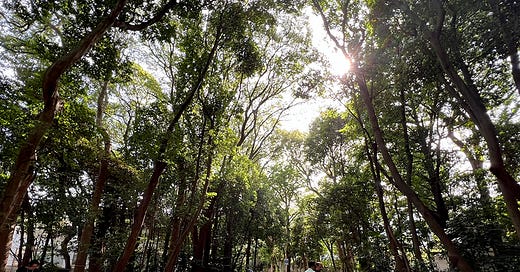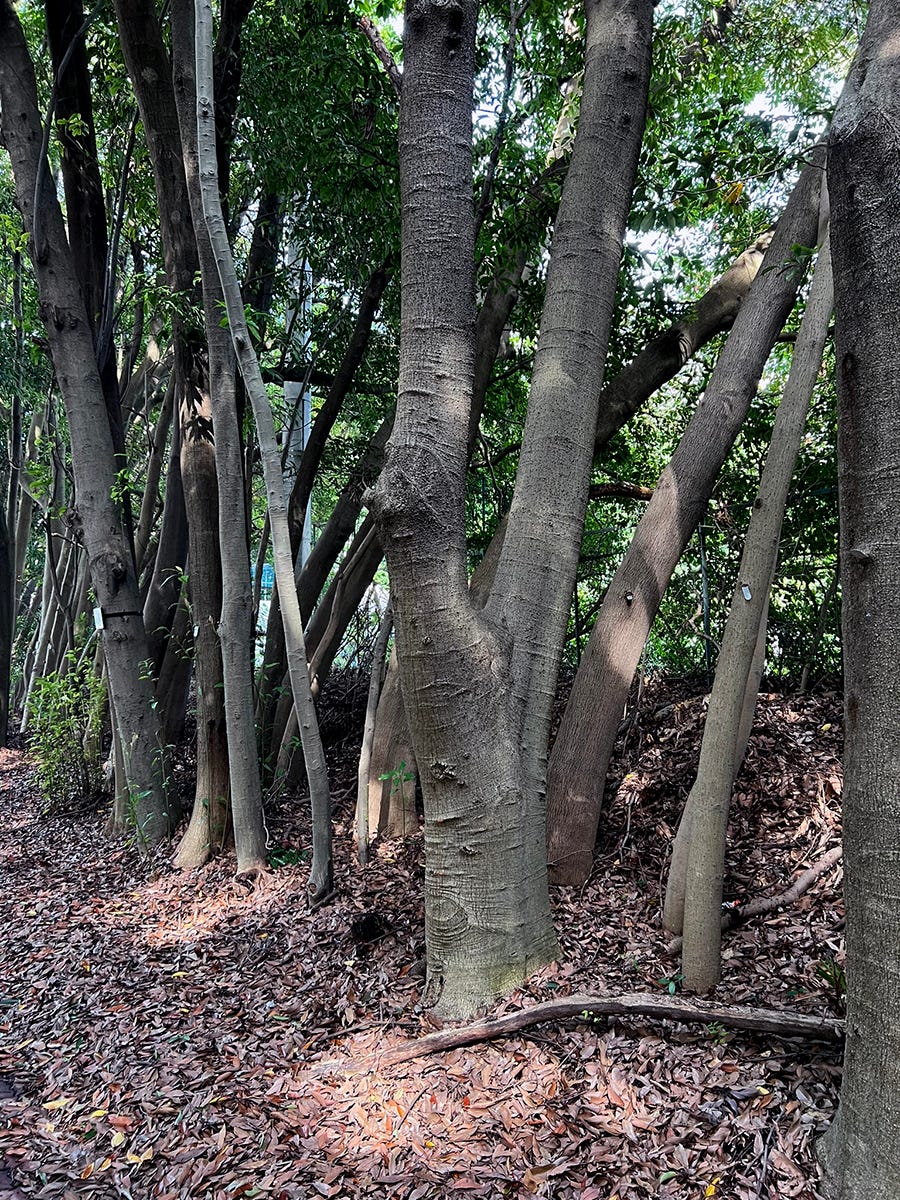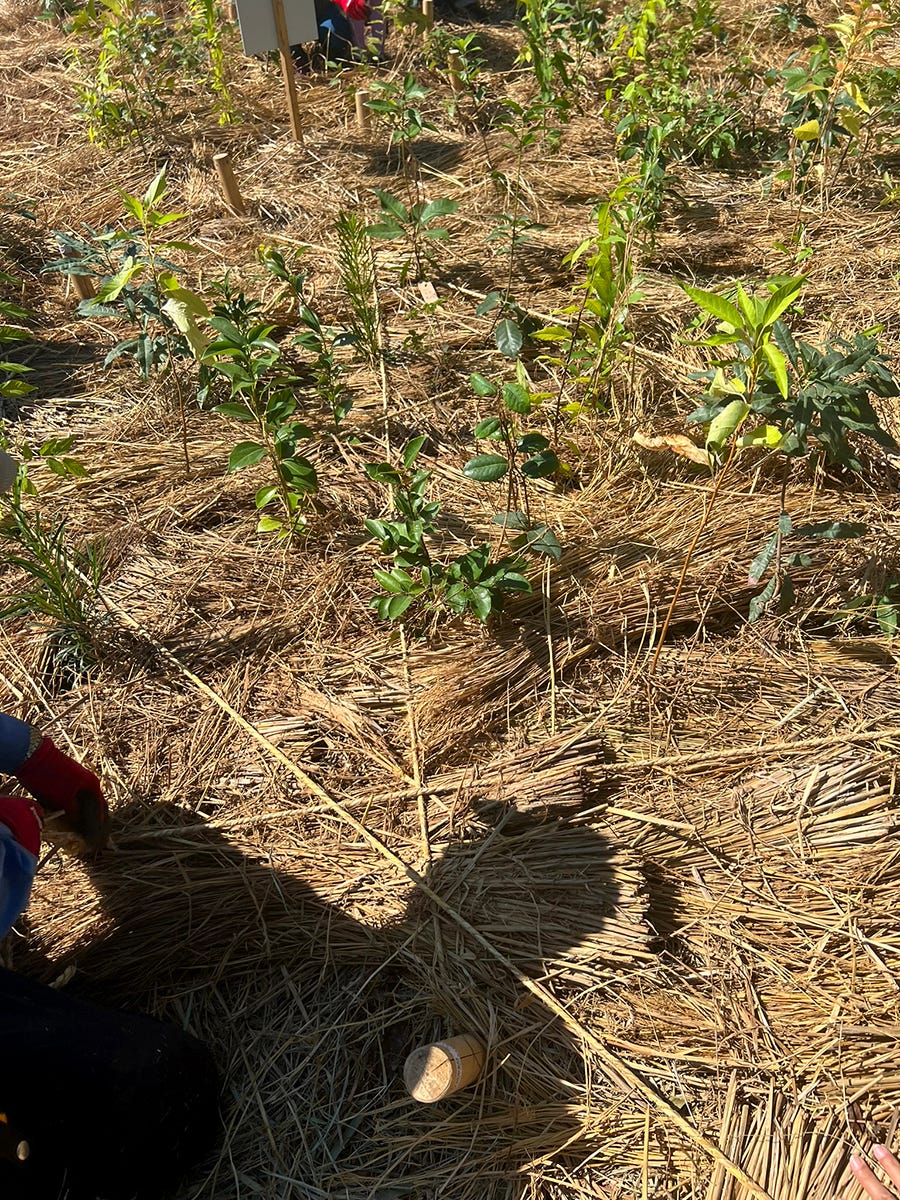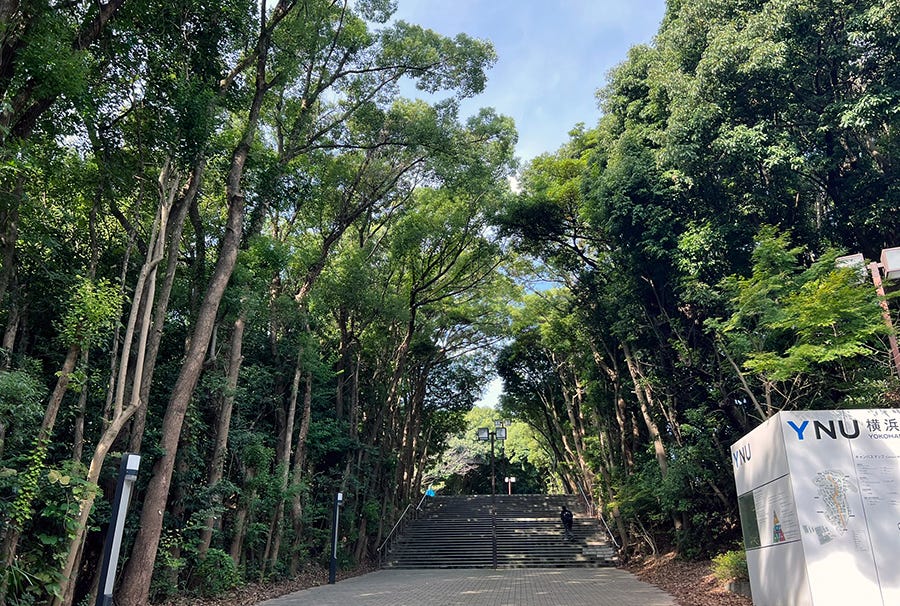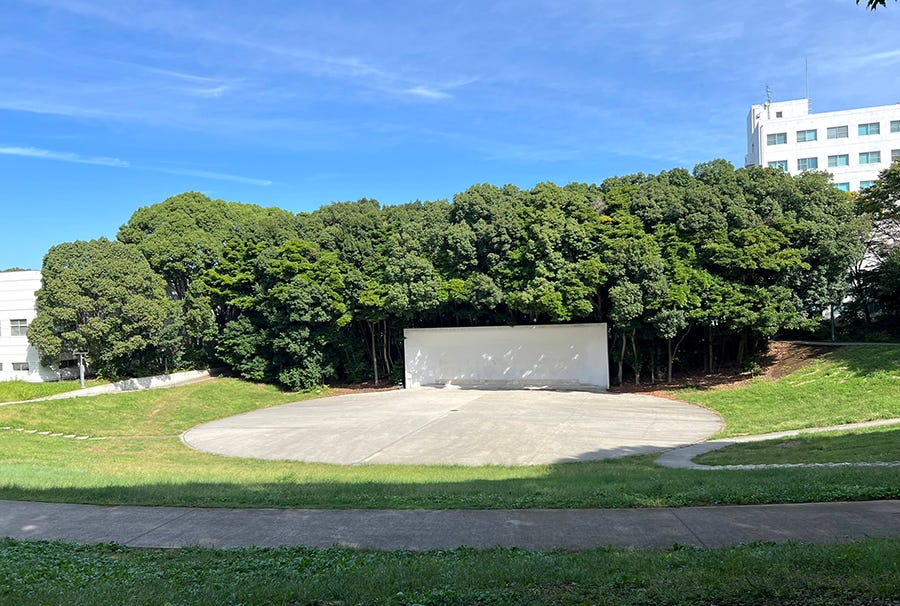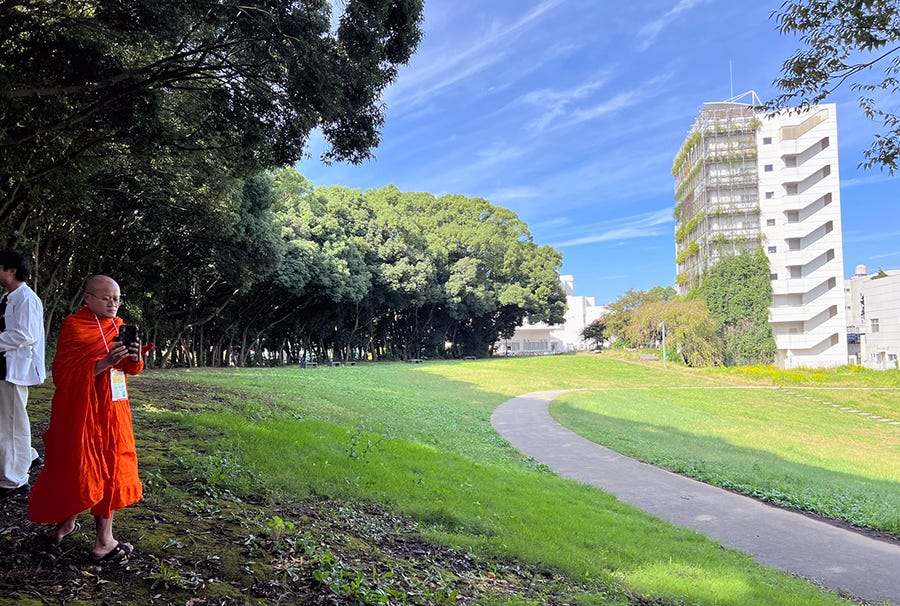
Jackie Shallcross
In early October, I was lucky enough to travel to Japan to take part in the first International Symposium: Miyawaki Forests and Urban Forests - Towards the Creation of Miyawaki Forests as Nature Labs in Schools. This was an event organised by the G20 Global Land Initiative, the Morino Project and the UN Convention to Combat Desertification (UNCCD).
Representatives from 27 countries met in Yokohama National University to discuss the science behind the Miyawaki method, and how it is being used all around the world. We also took part in community planting ceremonies and had lessons in how to grow trees from seed, the Miyawaki way.
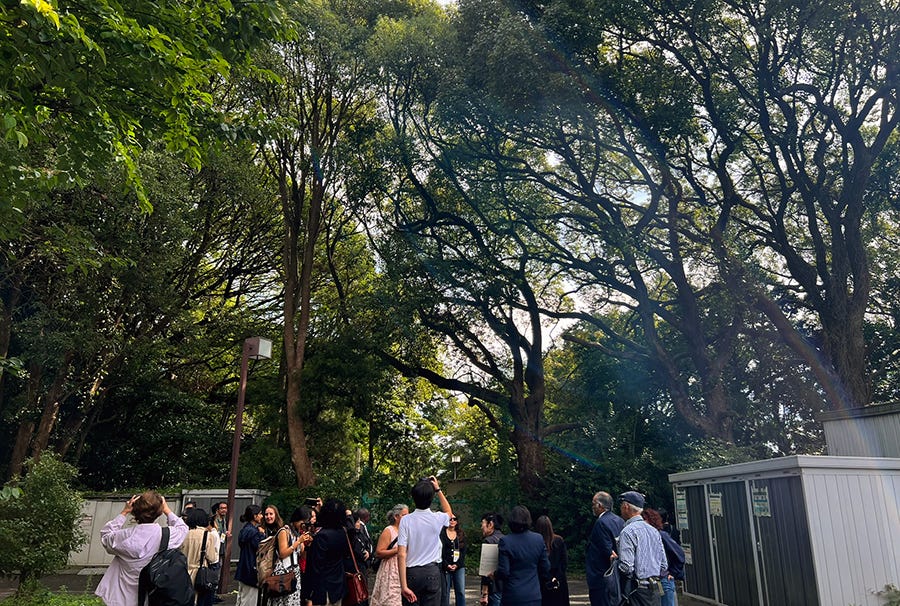
Professor Fujiwara and Professor Elgene O. Box kicked off this inspirational event by describing the history and original ideas behind the method. They explained how Professor Akira Miyawaki fused knowledge from his agricultural upbringing in Japan, with his academic experience, and the concept of potential natural vegetation which he initially worked on in Germany.
I love listening to scientists describe their work. Professor Fujiwara highlighted studies assessing the restored treescapes after 28 years, and 48 years, at a study site. She found some species had disappeared, and there were some newcomers that had not originally been planted. Growth and survival rates of the planted species were also showcased, and we heard about some of the locations with large scale forest restoration using the Miyawaki method.
The critical importance of understanding the potential climax forest vegetation of a site was reinforced (it takes an ecologist to do it). I learned more about the importance of shade, and how shade tolerant climax species are encouraged to grow rapidly when planted densely together in a place which has a climate suited to forests. The emphasis was on forest restoration and long-term stability. It was clear that this seemed to work in Japan (to date – with recognition that some of the oldest plantation trees are only now approaching their natural lifespan) with evergreen broadleaved climax species.
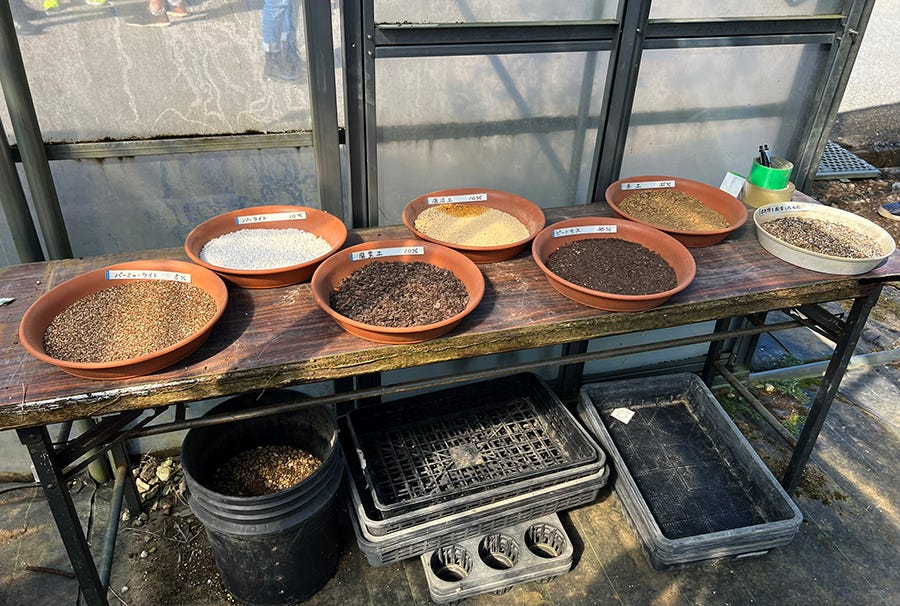
It was recognised that similar plantations around the world, and therefore in different climates, are very much still at experimental stages (e.g. what is the impact of a deciduous canopy that isn’t creating permanent shade, for example?). We heard fascinating results from projects in Thailand, Kenya and across Europe, among others, including some details about carbon sequestration, biodiversity, and possible application of the method for phytoremediation.
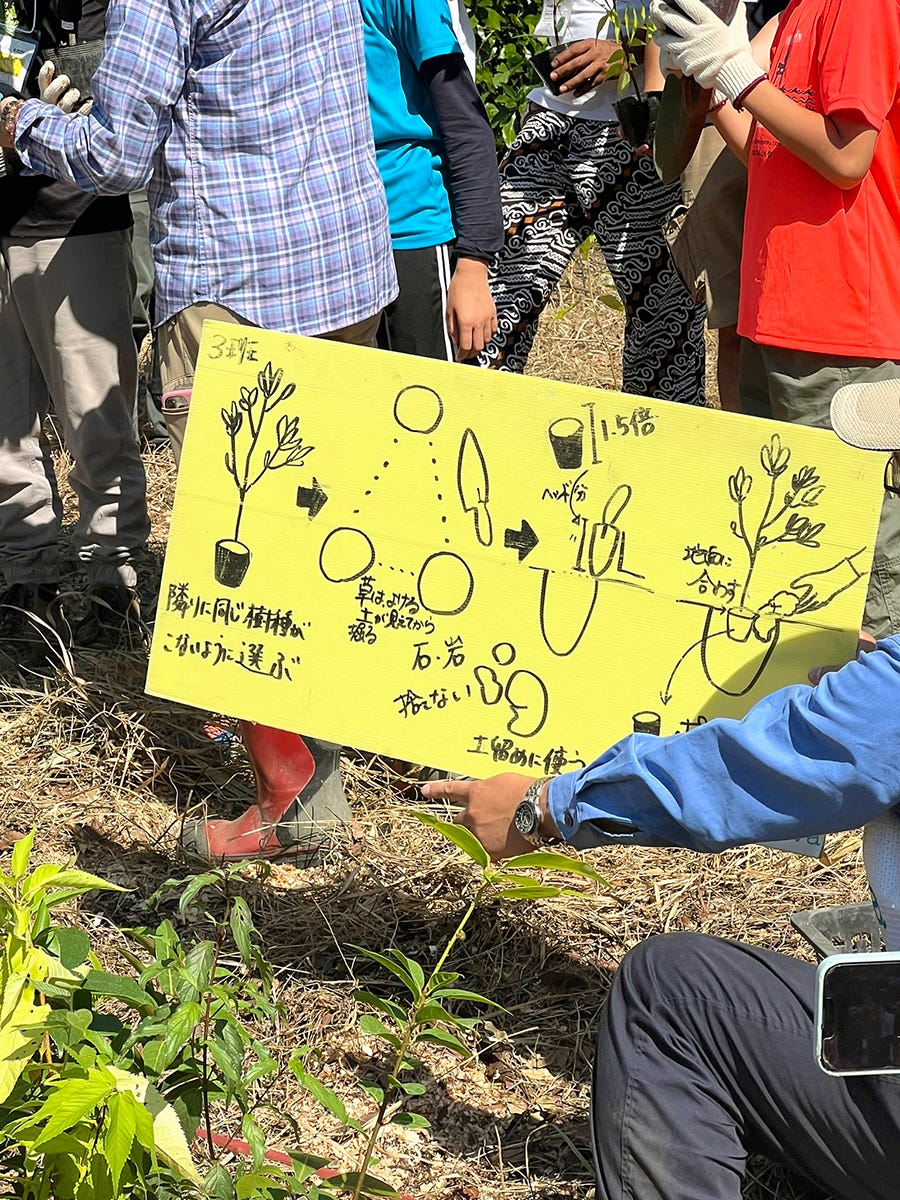
At the planting ceremony and through conversation whilst at the seedling workshop, I was really struck by both the holistic approach to nature, exemplified by the description of saplings as “babies”, and the care and attention applied to growing the seeds so carefully in pots, before planting them with love and great attention to detail (no notch planting and heavy boots here!). This extended to a contentedness with the fact that trees which may die and decay inside the planted forest are also part of the whole, and will nurture the rest of their ‘family’ as they decay.
There’s more to say about how Miyawaki Forests can and have been used as an integrated part of school education, but I’ll save that for another time as it’s a whole other discussion. Do get in touch if you’d like to be part of it!
I’m certainly not yet an expert in the Miyawaki method but I feel like I have a clearer understanding of the original principles, and the subsequent interpretations and uses around the world. It’s an exciting time to be part of, what I think we can call, a movement (but if you are uncomfortable with that, I’m also happy with ‘a developing body of knowledge’).
It was an honour and privilege to be amongst the inspirational people who are making a difference for people and nature, all around the world.
Louise Butfoy
Wow, what an experience! I feel extremely lucky to have attended the International Miyawaki Symposium alongside Jackie to present the results of our experimental Miyawaki trials delivered as part of the Trees Outside Woodland project.
There are now approximately 2,900 Miyawaki method forests across the world, including both small urban plots and larger habitat restoration projects. It was truly fascinating to learn about the very different (but equally important) ways that the Miyawaki method is being implemented worldwide and to spend time with so many knowledgeable and passionate scientists and practitioners, all with the shared aim of nature restoration, in both the ecological and social sense.
Professor Miyawaki created his methodology in response to the rapid post-war development of Japan and the linked pollution crisis.
Over the course of 5 fantastic days, I came to realise that a Miyawaki forest is greater than simply its specific methodology. It can be used to cultivate better environmental awareness and inspire, particularly children, to have a more harmonious and sustainable relationship with the natural world, helping to remedy our growing disconnection from nature. The fact that it can also be a tool for the restoration of degraded habitats and ecosystems to combat the biodiversity and climate crises, inspires a bit of hope.
As the closing remarks were made by Dr Muralee Thummarukudy, there was a sense of appreciation that collectively we are on the verge of something big, an international shared vision of utilising the Miyawaki method to bring nature to people all round the world.
Jackie Shallcross is The Tree Council’s Shared Outcomes Fund: Project Lead and Louise Butfoy is the Trees Outside Woodlands Project Officer at Kent County Council. Get in touch using scienceandresearch@treecouncil.org.uk
Find out more about the Shared Outcomes Fund: Trees Outside Woodland project, by visiting www.treecouncil.org.uk/science-and-research/shared-outcomes-fund/
Many thanks to the symposium organisers:
Muralee Thummarukudy, Director, G20 Global Land Initiative, UN Convention to Combat Desertification; Makoto Nikkawa, Secretary General of Morino Project; and the Symposium Executive committee: Kazue Fujiwara; Elgene O. Box; Grey Coupland; Teruko Sano; Mio Urata; Kazuhiro Mizuta; and Shin0ichi Suzuki.

